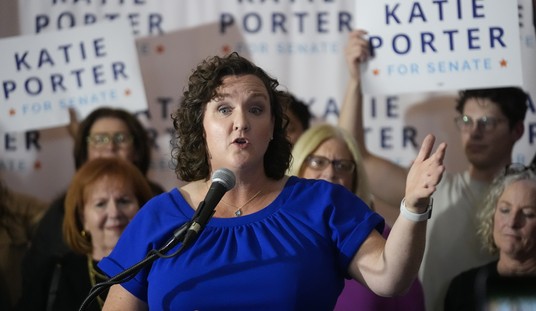The White House jumped at the latest “enrollment” figures from the ObamaCare program as proof that the program had turned the corner, and supporters followed suit. Less enthused were those who actually sell the product through the Healthcare.gov exchange. CBS News’ Sharyl Attkisson reports today that insurers are treating the figures with considerable skepticism — even if the numbers turn out to be accurate:
But the rosy portrait shatters under an alternate interpretation by insurance industry representative Robert Laszewski of Health Policy and Strategy Associates.
“They made a big deal about the age results,” said Laszewski after reviewing the HHS numbers. “But the greater challenge for them is the low number of people enrolling. There is no way you can get a good spread of risk with such a small percentage of the total eligible signing up.”
CBS News also received a guarded analysis from a source involved in implementation of the Affordable Care Act who supports Obamacare.
The source said the bump of young invincibles to 27 percent of January enrollees was “progress,” but added “they neglect to point out that they need roughly 40 percent to help achieve a balanced risk pool” necessary under a successful business model.
“3.3 million people is still a relatively small proportion of the population that ‘should be’ interested,” added the source, who is not authorized to speak on behalf of the administration and does not wish to be identified.
There is still plenty of room for skepticism, as we noted several times yesterday. But as Jay Cost demonstrates at The Weekly Standard, even the supposed momentum is mostly an artifact of selection bias:
On Wednesday, the Department of Health and Human Services announced that enrollment in the Obamacare private exchanges increased by 1,146,071 in January. In December, HHS reported 1,788,000 enrollees in the month of December. That suggests a drop-off of approximately 500,000, or 29 percent. (See the chart on page 5here for a graphical representation).
Yet this underestimates the true extent of enrollment dropoffs. The HHS reporting period for December was four weeks, beginning on 12/1 and ending on 12/28. The reporting period for January was five weeks, beginning on 12/29 and ending on 2/1. This suggests that in December, enrollments averaged 447,000 per week, compared to 229,000 in January, or a 49 percent drop-off in new enrollees.
It is clear by now that the administration will not reach the original CBO estimate of 7 million enrollees by the deadline at the end of March. The real question is: how far short will they fall? If February’s enrollment rate matches that of January, the Administration will be able to claim 916,000 more enrollees in the current reporting period, for a grand total of about 4.2 million. That is 60% of the initial CBO estimate with a month to go before the end of open enrollment. On the other hand, it is hard to tell whether matching the pace set in January is reasonable for February. Notably, Kathleen Sebelius announced on January 24 that HHS had reached 800,000 enrollees already for the month, suggesting that the rate in the final two weeks of the month was lower than the rate in the first three weeks.
I’m not convinced that the rate will remain steady. The imperative of signing up in December was obvious — millions of people got kicked out of their insurance plans by the end of the year and had to replace them. Most of that demand would have been resolved by now, which means that (a) a significant number of those booted out simply decided not to buy insurance again, and (b) what’s left to enroll will be the population of the willingly uninsured. By now, that population would have already made their decision about whether or not to remain uninsured, pay the relatively small fine, and wait until a big health issue popped up. At that point, insurers would have to cover them anyway, so why would healthy people pay premiums on plans with large deductibles that won’t benefit them in any way?
Don’t be surprised, then, to see momentum slow even further, and put the Obama administration and insurers in a very bad position regarding 2015 premiums.








Join the conversation as a VIP Member